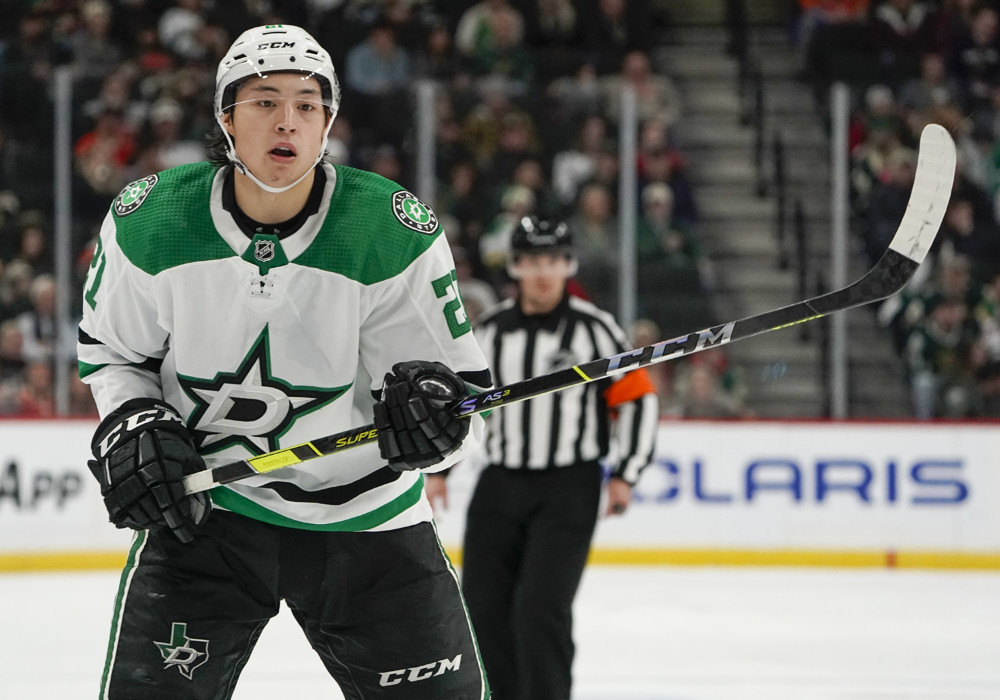How Jason Robertson Is Avoiding the Sophomore Slump
Confidence can take you down very different paths.
After a taste of success at the pro level, some players decide they’ve figured out the NHL. They think they can achieve similar results on cruise control. Others don’t allow complacency to set in. Instead, they feel capable of doing more, taking on a heavier burden in order to propel their team to new heights.
Jason Robertson clearly belongs to the latter group. A year removed from his Calder-worthy campaign (45 points in 51 games), the 22-year-old has recovered from an upper-body injury and revitalized a Dallas Stars club that was going nowhere fast. Rick Bowness’ club went 3-3-0 without his services to begin the season. This was no run of bad luck, as they owned just 45.6% of the scoring chances (26th), 47.0% of the high-danger bids (21st) and 44.9% of the expected goals (28th) at 5-on-5. They were playing awful hockey.
Since Robertson’s return, Dallas has caught fire and produced a 10-4-2 record. Its offense has gone from mustering 1.83 goals per game to a whopping 3.25 and the team as a whole has put up a 53.9 SCF% (6th), 55.9 HDCF% (3rd) and 52.0 xGF% (10th).
Once again, this is no coincidence. In two short years, the balance of power in Dallas has shifted. Robertson, a 2017 second-round pick, has risen to the top of the depth chart by delivering stellar production, deceptive skill and a jolt of energy to a forward corps that had seemed lifeless for quite some time.
The good news? Robertson (18 points in 16 games) looks like an even better version of himself in 2021-22. His touch and talent have always been evident, but his most notable upgrades are in the physical department. While he’s far from an intimidating presence, he appears much more comfortable in his 6’3”, 200-pound frame. Watch how disruptive he’s become around the puck thanks to his length and anticipation:
His ability to extend plays or regain possession has translated to team-best metrics (64.1 SCF%, 67.4 HDCF%, 64.1 xGF%, 68.2 GF%). In fact, he ranks second in SCF%, first in HDCF% and fourth in xGF% among all NHL forwards (minimum 200 minutes played). By hounding the puck, he’s offering the Stars longer offensive sequences and realizing their full potential on the attack. They can involve their full five-man unit, utilize the entire ice surface and test the opposition’s mettle in waves.
This stronger performance in the trenches complements a surprisingly dangerous transition game. Alongside the blazing-fast Roope Hintz and ever-crafty Joe Pavelski, Robertson and his linemates often break loose on odd-man rushes. The sophomore’s vision, accuracy and IQ are pivotal to extracting the most out of Hintz’s wheels. He’s a cheetah on skates, but that pace isn’t particularly useful if his teammates can’t connect with him in stride.
Robertson, for his part, displays a keen understanding of how to develop momentum through the neutral zone:
Involving Hintz early in the action has breathed life back into his floundering game. Without Robertson, the 25-year-old Finn registered a single point in six games, a 47.1 xGF% and 20.0 GF%. With Robertson, he’s tallied 15 points in 16 games while posting a 66.0 xGF% and 70.6 GF%. Yeah…that’s pretty good.
Dallas is a significantly better team when Hintz is flying up and down the ice with the puck on his stick—and Robertson ensures that he can do that on a regular basis.
It doesn’t hurt that Robertson is a high-end playmaker in cycle situations as well. Now acutely aware of how difficult his size is to contain, he’s shown a greater willingness to create opportunities with defenders on his back. He’s trusting his reach, his instincts and his raw talent. As a result, he’s manufacturing a stream of slot chances for Hintz, Pavelski or any other Star who wants to dive into the dirty areas:
Seeing as he won’t hesitate to pull the trigger either, he’s emerging as a deadly dual threat:
He currently ranks fourth leaguewide in points/60, but his OISH% is similar to last season’s mark because he’s averaging more shot attempts, chances and high-danger chances this year. He’s playing better and thus producing more. Hell, his line is executing at such a high level right now that it became the first unit in NHL history to score in the opening 75 seconds of a game four straight times.
Dallas’ top trio is delivering outstanding hockey at the moment, digging for pucks in the corners, pushing the pace through the neutral zone and generating chance after chance in the offensive zone. And Robertson is in the middle of it all.
He’s even putting forth more effort on defense:
It isn’t always pretty, but reaching another level offensively while striving to improve defensively is commendable. Really, it just speaks to Robertson’s mentality. Following a superb rookie year, he isn’t resting on his laurels. He’s adding layers to his game to enhance his strengths. He’s trying to help his team in every way possible. He’s still growing.
That’s what separates a flash in the pan from a reliable star.
Recent Posts

How Corey Perry Is Making His Presence Felt With the Lightning
View Post »
How Adam Fox Pushed the Rangers Past the Penguins
View Post »

